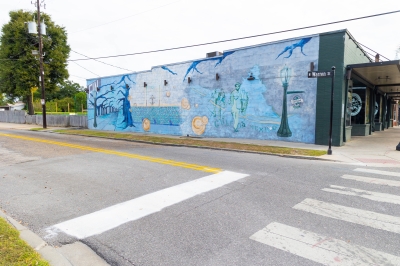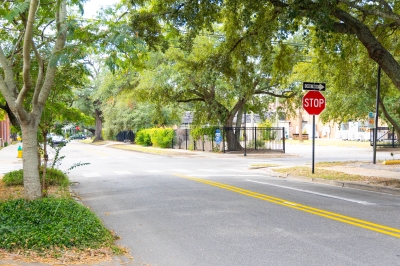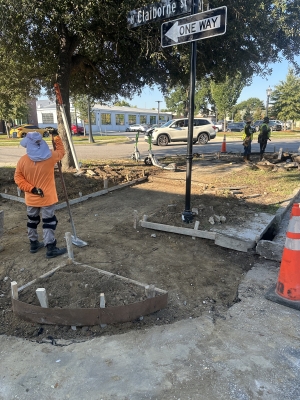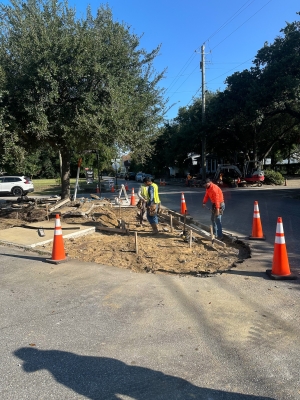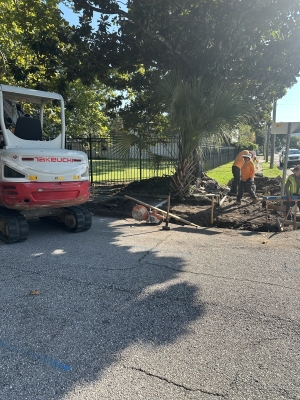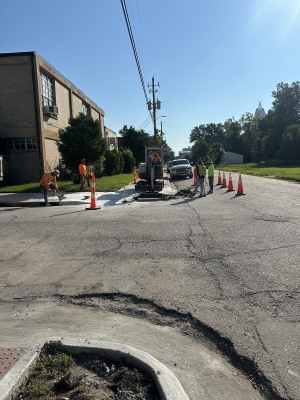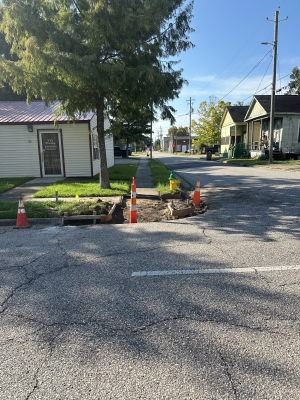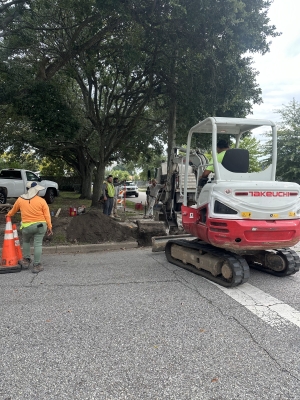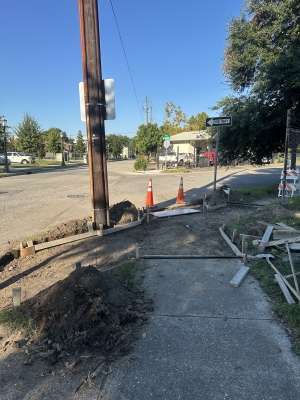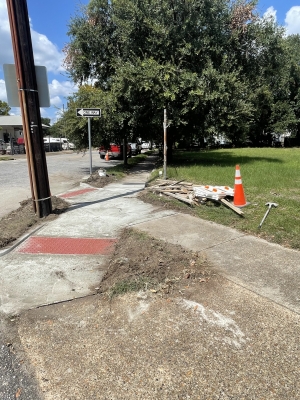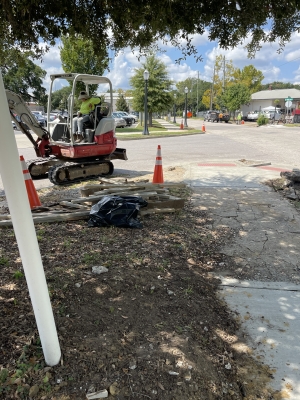Downtown Street Optimization
The City of Mobile is currently implementing a comprehensive Downtown Street Optimization Project designed to make the city’s central business district safer and more accessible to pedestrians, cyclists and motorists. This $4 million effort represents years of planning, community engagement, and collaboration.
More On-Street Parking
The Downtown Street Optimization will create more free parking in downtown. Through changes to striping and road configuration, the city will add 205 new, marked parking spaces throughout downtown. There will also be 34 new ADA accessible spots. No existing on-street parking will be lost, including in unmarked areas along the sides of various streets.
What's Changing
As part of this project, more than two dozen signaled intersections will be replaced with four-way stops to improve traffic flow and pedestrian safety. Dedicated bike lanes will also be added to several streets along with marked on-street parking spots in several locations. Several have already been added on Springhill Avenue. Once implemented, these changes will help improve access to downtown businesses and slow vehicle speeds to create a safer environment for downtown visitors in cars, on bicycles and on foot.
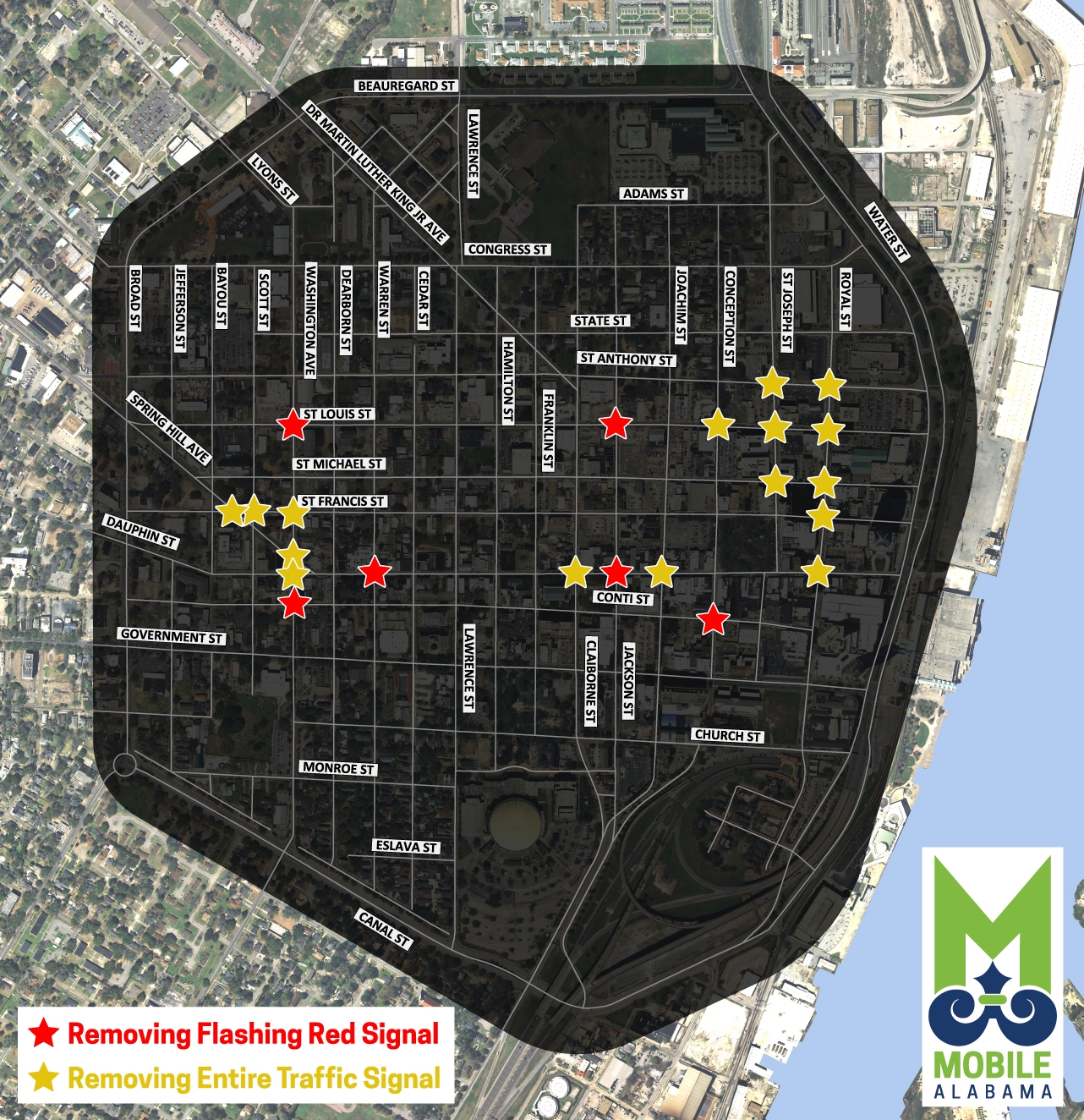
Two-way Streets, and On-Street Parking
The city is currently resurfacing and restriping several streets within the Henry Aaron Loop. Four of those streets will be completely converted from one-way traffic to two-way traffic, and sections of four others will be restriped for two-way traffic.
As part of the project, the following streets will be converted from one-way traffic to two-way traffic:
- St. Anthony Street
- St. Joseph Street
- Warren Street
- Dearborn Street
- Jefferson Street (Partial)
- Bayou Street (Partial)
- Scott Street (Partial)
The following streets will be resurfaced without any changes to the current traffic pattern:
- Royal Street
- Lawrence Street
Once converted to two-way traffic, the majority of these streets will use a yield-flow traffic model that allows traffic to safely move in both directions while still maintaining on-street parking. St. Anthony St. and St. Joseph St. will not be yield-flow streets once converted, as they are wide enough to function as traditional roadways with one lane of travel in each direction and parking on at least one side of the street.
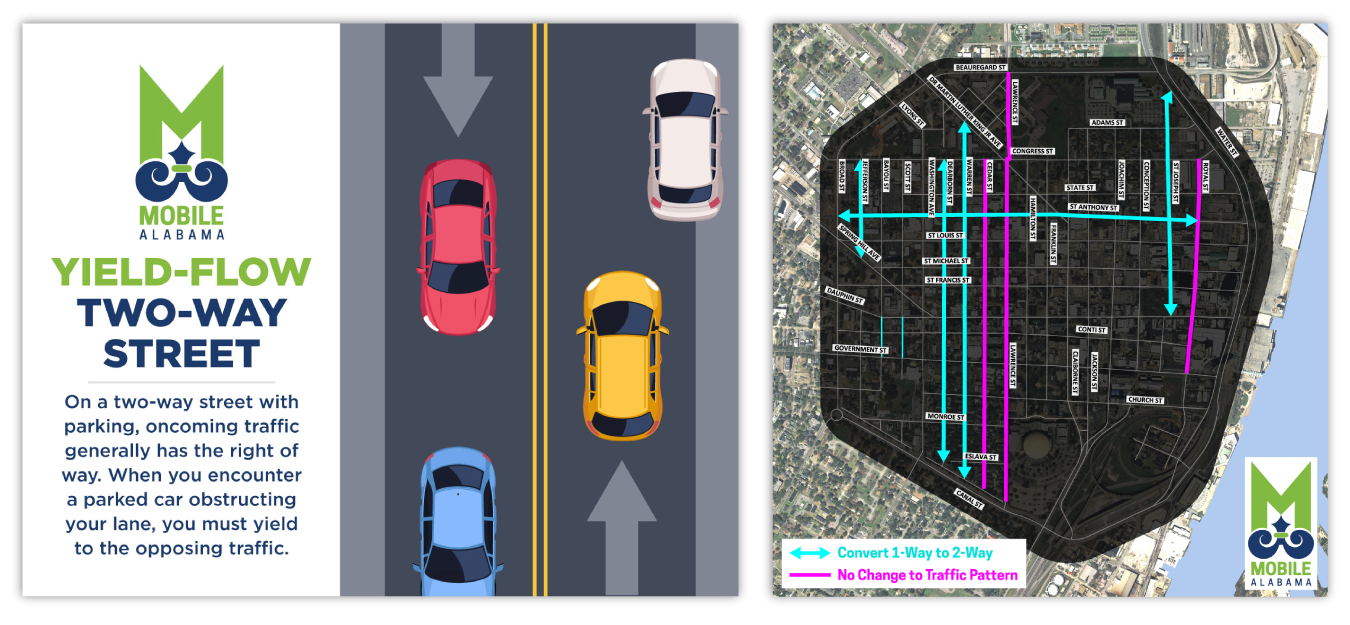
When the affected downtown streets are converted, unmarked parking will still be allowed on at least one side of the roadway, with few exceptions. Streets with parking on both sides will operate under a yield-flow traffic model. This means traffic can move in both directions, and when two vehicles meet, one will slow down or pull aside slightly to let the other pass. This model enables two-way movement and on-street parking — similar to how many streets in Midtown Mobile already operate.
Please note: To prevent congestion from vehicles turning northbound from Government Street, no parking is allowed on the southbound side of Warren or Dearborn Streets between Conti and Government Streets. Parking is permitted on the northbound side of Warren or Dearborn between Conti and Government, except for the first approximately 90 feet from the intersection with Government Street. There are signs posted in the areas where parking is not permitted. See the map below: Outside of those specific areas, on-street parking is permitted on both sides of Dearborn and Warren Streets throughout the Henry Aaron Loop. This parking is unmarked.
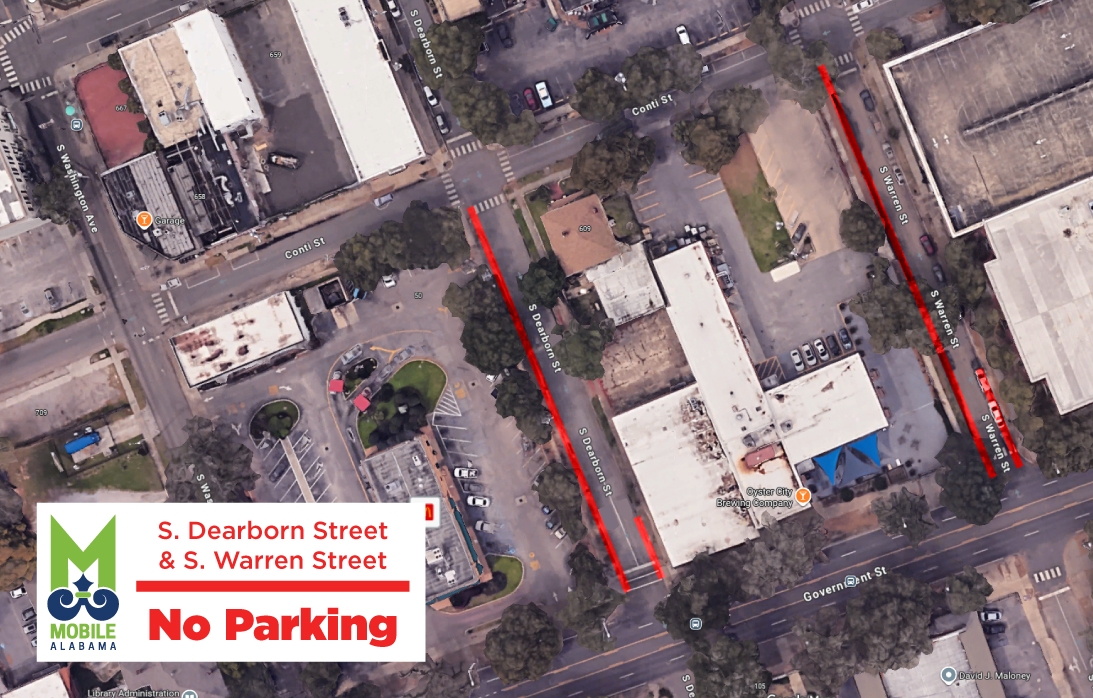
Temporary No Parking During Conversion
Ahead of each street's conversion, temporary "No Parking" signs will be posted to clear the area. The actual work — resurfacing, restriping, and signage changes — will typically be completed overnight to minimize disruption and, in most cases, will only take a few hours. If a vehicle remains parked in a street scheduled for conversion on that night, it may be subject to towing. Once the street opens the next morning in its new configuration, parking will be allowed on both sides of the roadway.
Shaped by Community Input
The planning for this project started in 2020. The Downtown Mobile Alliance partnered with nationally recognized urban planner Jeff Speck to study how we could get the most utility out of our downtown streets while also making the area more walkable, bikeable and accessible in general. The resulting Downtown Street Optimization Plan was shaped by extensive engagement with residents, business owners, and community stakeholders throughout the downtown area. The final recommendations reflect Speck’s planning expertise and the voices of those who call downtown home.
You can view the full report and Jeff Speck’s presentation on the Downtown Mobile Alliance website here.
Led by the City of Mobile
While the Street Optimization Plan was developed by the Downtown Mobile Alliance and downtown stakeholders, the City of Mobile is leading the construction and implementation of the plan. We are committed to making these improvements and believe they will be Downtown Mobile better for businesses, residents and visitors no matter how they choose to navigate the area.
We know some changes will take time to adjust to, but they will ultimately create a downtown that is more vibrant, connected, and accessible. We are committed to making these changes as smooth as possible for residents and businesses. As with any project, our traffic engineering team will be evaluating the impact throughout the project so that any necessary adjustments can be made.
Work to implement the Downtown Street Optimization Plan will take place in stages to minimize disruption to downtown businesses and public events. The project is expected to be fully completed in the spring of 2026.
Latest Updates
Warren Street and Dearborn Street have already been converted to two-way street configurations. The streets are now open, and parking is allowed on both sides of the roads, except in the no-parking areas between Conti Street and Government Street mentioned above. Dearborn and Warren streets will be resurfaced later in the project.
Work to remove traffic signals from select downtown intersections is already underway. As contractors work to remove 26 traffic signals from these low-volume intersections, they will be replaced with four-way stops. Crews are simultaneously installing new ADA-accessibility ramps and restriping crosswalks at these and other intersections throughout downtown Mobile.
The 26 traffic signals scheduled for removal began flashing red on Wednesday, August 13, 2025, and will continue to do so until approximately November 11, 2025. This transition period gives motorists and pedestrians time to adjust to an all-way stop and allows traffic engineers to observe driver behavior.
Painted Utility Cabinets Downtown
Over the last three years, the Mobile Arts Council has partnered with the Downtown Mobile Alliance and local artists to paint or wrap 25 utility boxes throughout downtown. These boxes, or traffic signal cabinets, are necessary to house the equipment that operates traffic signals in the downtown area.
Nine of the boxes are no longer necessary because of the Downtown Street Optimization Project and will be removed. Some of them already have been. However, the City of Mobile is working with the Mobile Arts Council and Downtown Mobile Alliance to ensure they are preserved. Our goal is to find another use for them downtown or return them to the artists who created them.
